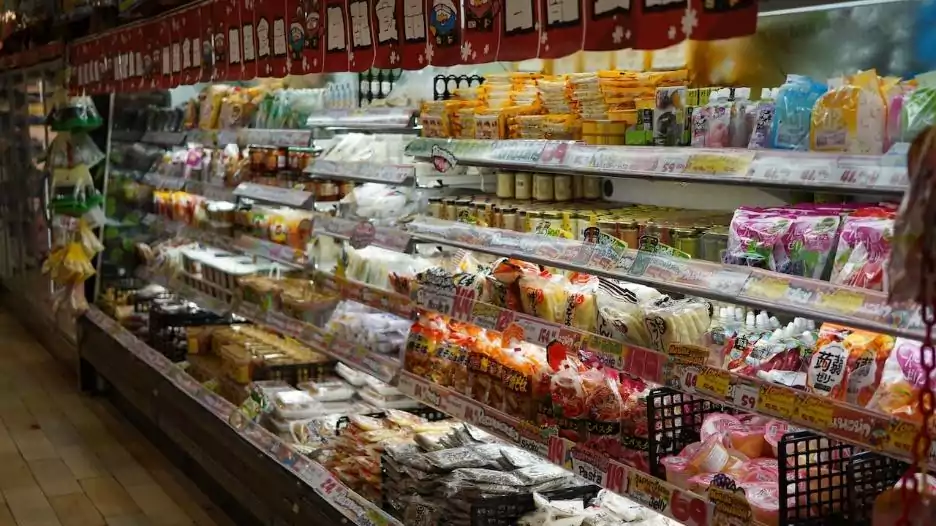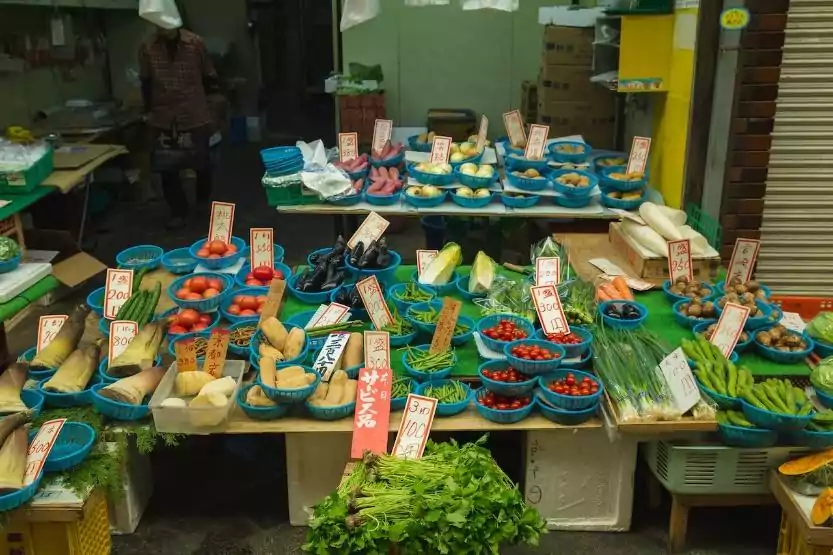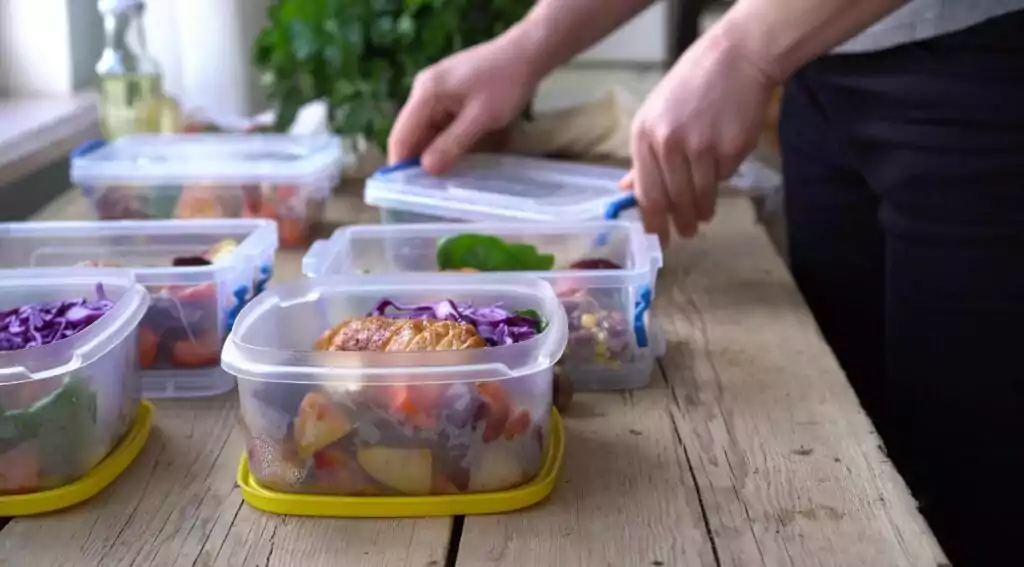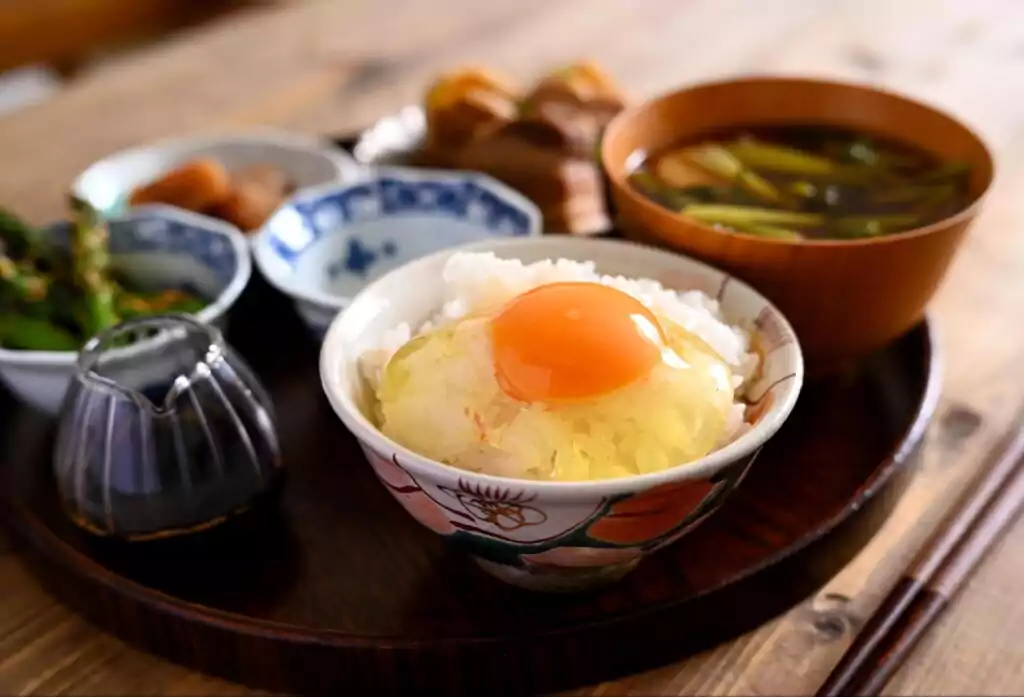Japan has traditionally been hailed as one of the more expensive countries to live in, but this can be dependent on whether one chooses to live in one of the densely populated cities such as Tokyo or Osaka, or reside in a smaller town or rural area.
That being said, living in Japan can get quite pricey and if you’re someone who has a rather tight budget to adhere to, it probably comes as no surprise that you’ll find ways to reduce costs. One area where budgeting can be sensibly done is groceries.
According to numbeo.com, the daily recommended minimum amount of money dedicated towards Western-style foods and ingredients per person in Japan averages around ¥1,447.20 per day or ¥44,863.31 per month assuming there are 31 days in a month.
For Asian and local style foods and ingredients the minimum amount of money per person per day averages around ¥1,102.04 or ¥34,163.39 per month.
It’s important to note that fruits and vegetables tend to err on the pricier side in Japan compared to Europe or the States, so if you’re vegetarian or vegan, your grocery budget may differ.
Cutting down costs on groceries is made possible by buying local and sticking to Japanese products and seasonal foods. Taking advantage of weekly discounts and end-of-day deals on ready-to-eat foods at supermarkets can also help save money. Buying from local mom-and-pop shops instead of supermarket chains can also help reduce costs as supermarket prices tend to be a bit higher due to products being sold with packaging.
1.Reduce Your Grocery Shopping Trips

When it comes to grocery shopping, it’s recommended to shop 2~3 times a week and to go to the store armed with a shopping list. The key is to not deviate from the list. If being physically in the store proves too tempting for your wandering eyes, consider online grocery shopping.
Before going grocery shopping, take inventory of what’s in your fridge and pantry. You can save money by using up products already in your possession and avoid food waste at the same time.
Another way to save money while grocery shopping is to check deals, sales, and discounts at your local grocery store. Japanese supermarkets are big on weekly deals and special discount days; so familiarizing yourself with things that go on sale at your local supermarket can help you stay within your budget.
2.Buy Cost-effective Ingredients

As previously mentioned, shopping for local products and ingredients helps to save money when grocery shopping. One cheap, versatile, and fairly healthy ingredient that is plentiful in Japanese supermarkets is rice. Rice is a staple in Japan and can be a cost-effective ingredient especially if bought in bulk. For example, a 2kg bag of rice costs around ¥980 and amounts to around 28 bowls. If one bowl of rice is eaten per day, a 2kg bag will last the entire month.
Another cheap and cheerful local ingredient that can be found in any Japanese supermarket is miso. Aside from making the classic, traditional miso soup, this ingredient can be used in marinades, dressings, sauces, and even in baked goods.
Continuing on the trend of buying local, noodles such as soba, udon, and ramen can be found either fresh or frozen for as little as ¥110. This ingredient is extremely versatile as it can be used to make a wide range of dishes and meals.
Lastly, products such as tofu (¥98 per pack), chicken breasts (¥348 per 500g), eggs (¥168 per4-pack), cabbage (¥173 per head), bean sprouts (¥18), and onions (¥204 per 3-pack) are also items that are cost-effective, versatile, and healthy in Japan.
3.Cook Large Amounts at once

If you’re not someone who’s picky about eating the same thing for dinner a couple of nights in a row, then meal preparation can go a long way to stretching a tight budget. Meal preparation or meal prep is the habit of preparing meals for the week and freezing the leftovers in batches to be reheated for lunch and/or dinner over the next few days or weeks.
Meal prep is beneficial in that you minimize food waste by using up all the ingredients and products purchased. Not cooking every day also helps you save money on utilities because you’re using less gas, water, and electricity. Preparing your meals in advance also benefits your overall health as it contributes to a more nutritionally balanced diet and helps reduce the stress and anxiety over what to have for lunch or dinner.
4.Collect Points

Point cards and loyalty cards are an integral part of Japanese consumer culture and 9 times out of 10, when you’re checking out your items, the cashier will ask if you have a point card or loyalty card for them to scan.
Point cards and loyalty cards are a great way to save money and earn money for when purchasing groceries, medicine, food, etc.
One of the most popular point cards in Japan is the T-Point card, which can be used in convenience stores such as Family Mart, supermarkets such as Tobu Supermarket, electronic stores, and even restaurants. For every ¥200 spent, 1 point is earned; and when enough points are collected, they can be used to purchase things.
Another popular point card is Nanaco, which is associated with the arguably most popular convenience store in Japan, 7-Eleven. 1 point is earned for every ¥200 spent.
Local supermarkets may also have their own loyalty card system. For example, OK supermarkets have their own loyalty card, and you can get a discount on your purchase when it’s used.
5.Learn Budget-Friendly Recipes

There are loads of budget-friendly, easy-to-make, fairly nutritional, and healthy recipes that make good use of the cost-effective ingredients and products found in Japanese supermarkets.
One food that is fairly easy to make and cheap is onigiri or rice balls, which require ingredients such as nori (seaweed), bonito flakes, rice, and either a protein such as fish or vegetables.
Another easy and cheap dish to make is rice with natto or rice with a raw egg.
If looking for something to warm you up, especially with winter fast approaching, then perhaps miso soup or oden should be considered. Miso soup can be made with miso paste, tofu, and seaweed; and can be eaten alone or paired with a protein such as chicken breast, and a carb such as rice or noodles. Oden, on the other hand, is a type of one-pot dish using ingredients such as vegetables, fish cakes, eggs, and konnyaku. Everything is simmered in a kombu and dashi broth.
If you have leftover rice, omurice, Japanese curry, and Yakimeshi (Japanese fried rice) are all great dishes that utilize the aforementioned leftover rice.
If noodles are more your cup of tea then why not whip up a dish of Yakisoba (Japanese fried noodles), which uses cheap and cheerful ingredients such as cabbage, carrots, mushrooms, and a protein such as pork?
In sum, it’s entirely possible to keep your grocery budget to as low as ¥20,000 if you stick to buying local, don’t mind eating the same meal for a few days in a row, and get creative in the kitchen with those ingredients and products you already have in your fridge and pantry.
Related articles:
- Does Cooking At Home Actually Help Save You Money When You Live Alone? Top 5 Tips on How To Succeed!
- Tips on How to Save Money on Groceries
- How to Save Money? Kakeibo!



